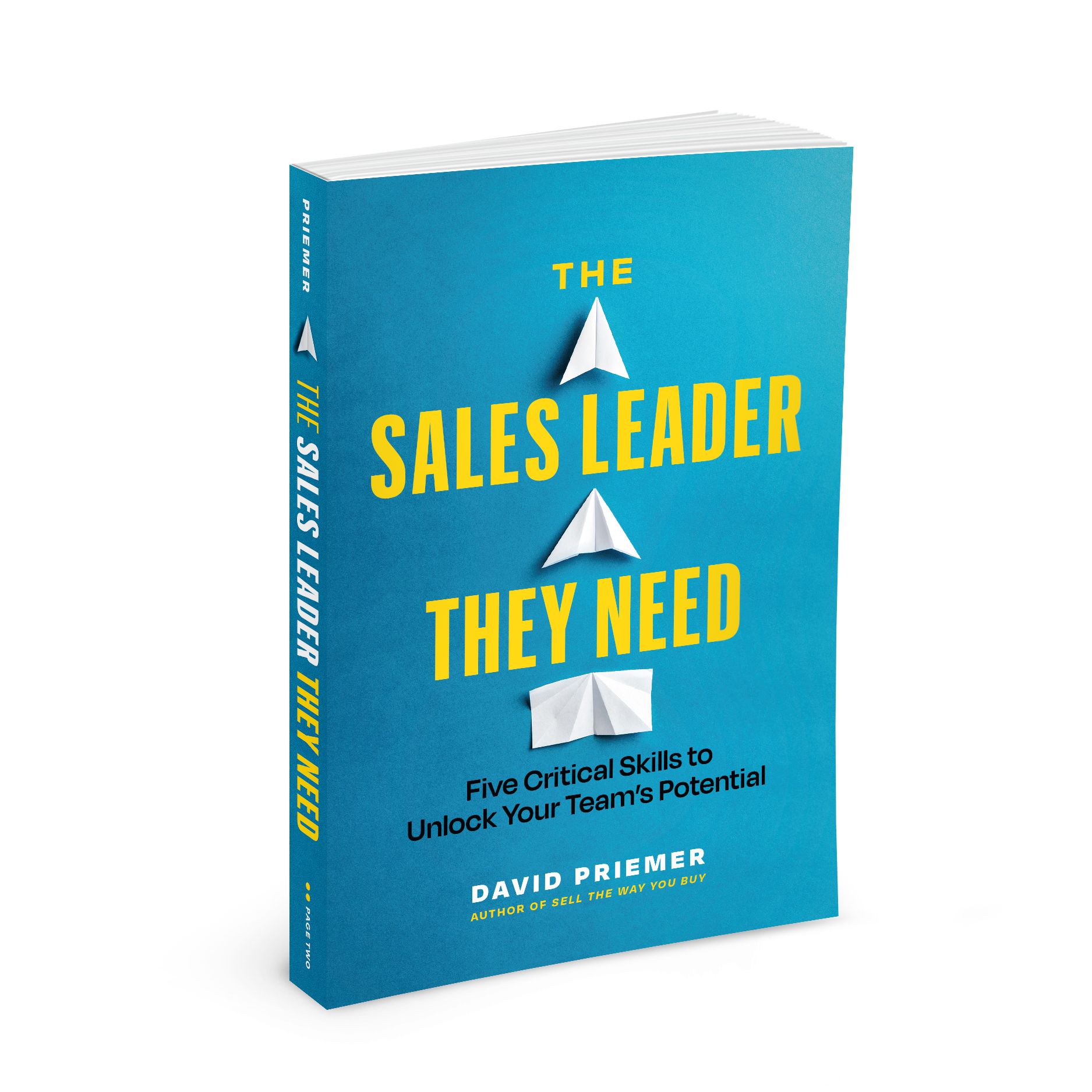3 Tips for Connecting with Customers During Times of Adversity
With many months of pandemic selling behind us and both economic and geopolitical issues continuing to impact the market, it’s clear that businesses continue to deal with all manner of operational and cultural turbulence. From the shift back and forth to remote work and the great resignation, to changes in personal and organizational priorities and the venture funding climate, disruptive forces can be found everywhere in the modern workplace. And while change is constant, the frequency with which adverse conditions present themselves these days shows no signs of slowing down. Indeed, adversity is here to stay.
For their part, salespeople continue to be relied upon to drive the revenue engines of their organizations, forcing them to continue asking tough questions like:
- should I change how and where I invest my precious time and attention?
- which customers should I focus on as market needs shift?
- how should my message and value proposition be different than “before”?
In short, during times of adversity how should you change the way you sell?
Remember, Trust is A Biochemical Reaction
Science tells us the way we behave with our customers during times like these will have a big impact on how they see us in the future!
In his bestselling book Leaders Eat Last, author Simon Sinek states that when asked a simple question, “‘What was one of your best days at work?”, very few of us recount a time when everything went smoothly and the big project we were working on came in on time and on budget.” Rather, it’s those times where everything went wrong, we experienced a shared hardship, and we had to pull together to get through it, that we remember the most.
That’s no accident.
In fact, the way we as humans treat each other during times of hardship produces biochemical breadcrumbs in our brains. As social animals, it’s evolution’s way of helping us remember how best to work together to overcome shared obstacles.
In my book Sell The Way You Buy, I explore this phenomenon and some interesting research from Paul Zak, a professor of economics, psychology, and management at Claremont Graduate University, and a pioneer in the area of neuroeconomics. In 2004, Zak’s lab discovered a neurochemical called oxytocin, colloquially referred to as the “trust hormone.” When we find ourselves in situations where other people demonstrate trust, empathy or kindness toward us, oxytocin is released, letting our brains know it’s safe to engage.
On the flip side, when someone acts in an inappropriate or unempathetic manner towards us in times of adversity, we can become highly resistant to them…and the feelings of resistance left by those biochemical markers don’t fade easily.
3 Tips for connecting with customers during times of adversity
Here are three tips for reaching out to customers and executing your sales motion during this global crisis.
1. Acknowledge and empathize
When you reach out to your customers (or even when you respond to their outreach), before diving into business or your pitch, first acknowledge what they might be going through at the moment. Care. Show genuine interest in how they’re doing, especially if their geography or industry has been especially affected.
For example, “Hi Mary, I’m sure like most of us you have your hands full at the moment and I imagine being in the travel industry has presented some unique challenges. How have things been going?”
As we’ve learned from the endless discussions we’ve had with our customers over the years about the weather, our children, pets, vacation stories, and even personal hardships, nothing brings people together more than shared human experiences.
Note: acknowledging and empathizing is also one of the BEST ways to handle some of your customer’s most pointed objections! Check out my recent post: 3 Objection-Handling Lessons from Pandemic Politics.
2. Personalize and prioritize your outreach to those you can help the most
Your target audience and the things they value may have changed quite substantially. That means curating your lead list and linking your solution to a specific challenge that customers in a given role or industry might be experiencing now is key! Not only does this demonstrate the degree of personalization and relevance that customers appreciate and expect, but the increased focus on the people you can help the most will:
- create more empathy and affinity with your customers
- boost your win rates and
- help you execute with more passion and conviction (both intoxicating emotions in the science of persuasion).
Bonus Video: What your customers value has changed! Has your pitch?
Warning: it pays to dial in your value proposition as much as you can to suit the times here. For example, your solution might help your customers save money by automating or accelerating some of their business processes. But leading with a statement like “During tough times like these you’re probably looking to save as much as you can, right?”, sounds generic, leading, and disingenuous. Instead, focus on a use case that directly relates to something the customer may be experiencing now. For example, “With more employees working from home, many of our clients are realizing they’ll need to spend more time processing a larger number of previously unseen expenses. We can help with that.”
Bonus Video: Don’t Spend Time on Bad-Fit Customers
3. Make it ok for them to say ‘no’
As I’ve discussed in the past, the psychological principle known as reactance can immediately cause customers to become resistant to the advances of an insensitive, unempathetic salesperson. In short, if a customer feels cornered or pressured by your outreach (whether on the phone or via email), they’ll shut you down, hang up on you, or worst of all, go dark. It’s absolutely true that some of the best sales opportunities are born out of adverse times, but as buyers are scrambling to deal with all manner of professional and personal fires, now simply may not be the right time for some, and that’s ok.
Recognizing the adversity of the current environment and making it ok for your customers to say ‘no’ or ‘not now’ will do two things. First, it makes it more likely that you’ll get an answer at all! Of course, we’d prefer a ‘yes’ but even a ‘no’ or ‘not now’ are both vastly preferable to no response at all. Second, even if the timing isn’t right, your customer will remember that you handled the situation with kindness and empathy when the time comes to reengage (which they’ll be more likely to do). Remember, oxytocin leaves a strong biochemical footprint!
For example, you might say something like “While it’s definitely been a challenging time for all of us, we’re grateful to have helped similar clients in a meaningful way with minimal heavy lifting on their end. I’d love to explore how we might help you but I know you’ve probably got a ton of things on your plate. If you’re keen to continue the conversation and learn a bit more, I’d love to help! If you’re not interested or the timing isn’t right, that’s ok too. Just say the word.”
Note: before using this tactic it’s important to first demonstrate the value of working with you to the client! A classic bad example would be cold-calling a client and saying “Hey, it’s David calling from Acme Co. Do you have a few minutes to talk? And if the answer is ‘no’ that’s ok.” As the buyer, I’d take that out every time! This approach is best used after outlining the value you add (e.g. the personalized approach outlined in section 2). That way, if your customer says no, at least the value of what they’re saying no to will be clear to them should they choose to reengage in the future.
Bonus Video: Giving Them Permission Say ‘No’, Will Help Them Say ‘Yes
Market turbuelence has presented buyers and sellers around the globe with a myriad of challenges and opportunities. While businesses do their best to survive and thrive in this unprecedented climate, architecting our sales motion to bias toward empathy and kindness will no doubt pay huge emotional and commercial dividends when the smoke inevitably clears.
Bonus Training Video: How to Sell in Times of Adversity
We promise never to send you junk or share your email! Just helpful sales insights.














Leave a Reply
Want to join the discussion?Feel free to contribute!